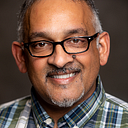Time To Start Traveling On the Less Traveled Path in Math Education:Impossible Ideas
In the 20th century, math education was a cliched amalgam of authority and tradition, an impenetrable fortress to ideas and imagination that would “threaten” its history of compliance and conservatism.
While mathematics is a stake holder in truth, poetry and art speak to truths that are more accessible to all of us — especially since they speak to our hearts, first. But, even as something as wildly as endearing as the words of Robert Frost, somehow have had little currency in shaping math education.
But, that is because only mathematics is wild. Math education is not. It is in that gulf that we should see what needs to be done now in the 21st century.
We have to walk the walk. We want our students to be risk takers in the classroom. Well, so do we. We want our students to struggle. Well, so should we at times. We want our students to appreciate the failures of learning mathematics. Well, so should we.
Trying to make everything perfect — like a perfect landing in a gymnastics routine — is not only stressful, its inorganic intentions runs counter to experimenting, pushing boundaries…pushing ourselves. Guardrails are needed on highways. They shouldn’t be put up in our classrooms — especially with regards to what students can learn and when.
Math Education’s energy and direction is largely a function of the comfort zone of teachers. The general philosophy is that whatever is taught and presented must be, at first, in the comfort zone of the teacher — before it can be in the comfort zone of the students.
While there is some truth to that, there seems something very school about that — follow topics order, be aligned to a curriculum that you had no say in constructing, and get students to be tested. Don’t skid off the road.
Let Dan Finkel take some of the burden off your shoulders. In his highly watched TED Talk, the Third Principle(of Five)for Extraordinary Math Teaching is:
Your job — your desire — should be to want to find the answer. But, you shouldn’t have to a some walking math encyclopedia. Not only shouldn’t you, you also can’t. I possess some ridiculously low percentage of math knowledge in the universe — as do all of us — so, to implicitly communicate that is disingenuous. The truthful path, the easier path, is to not be worried about the answer. Most of the time you will know it, but if you don’t, get excited that moment with your students — it might not come again.
One of the most challenging ideas to any mathematician on the planet is the concept of Graham’s Number. To say it is a beast of a number is an understatement as large its very size. Truth be told, very few people on the planet really have the comfort and knowledge to explain the size of that number to themselves — let alone anyone else.
I for sure know I am not one of them. And yet, this very concept(and picture below is the book “Math Recess: Playful Learning in an Age of Disruption).
I tried to explain it, and even offered an upfront apology that my explanation, well-intentions and all, was going to fail. The idea of Graham’s Number was put in the book more as a metaphor for learning and teaching mathematics. We have to stretch the canvas of our collective imaginations and embrace all the wonderful attributes of failing, not being perfect, and just being human — before anything else.
When are kids ready for an idea like this? Honestly, not sure. But, I think it is unhealthy to dwell on it, if in the end, we become gate keepers of knowledge and ideas based on comfort zones and norms that have reached their expiration date.
How does one capture the curiosity of students in mathematics? Competency is not the road. Many have taken that road, fulfilled their obligations with courses completed and marks obtained, and never looked back at mathematics again.
That is not what I want for my own kids. They say you shouldn’t chase money in life. Chase your dreams and your heart and that will follow. Same with education. Don’t paper chase. Chase the fantastic ideas, heady, and edgy ideas of mathematics found everywhere in K to 12 mathematics — accessible to all — and you will garner those societal badges of knowledge acquisition.
Impossible ideas. Try them and share them. If they fail, well heck, try another one. Don’t spend your entire teaching career inside the guard rails — you just might have the grave misfortune of never failing.
Ironically, never failing will create the arid soil in which curiosity will fail.
And that is the final measurement for all of us — did we nurture curiosity or did we destroy it.
